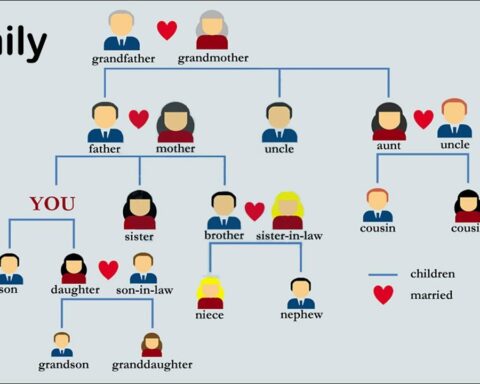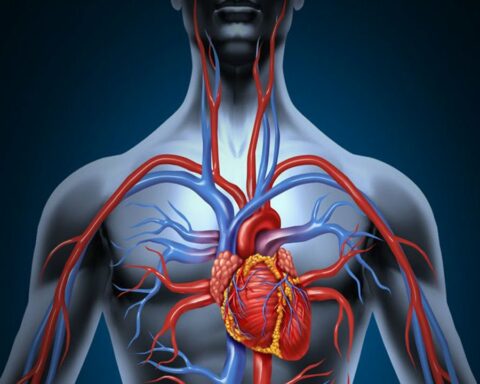Overweight and obesity is a common health problem that affects a big population. To lose weight, most people turn to regular exercise and healthy eating. For some, following a calorie deficit has yielded great results.
Losing weight is not a short-term plan as it requires patience and determination. Many people do give up easily on this journey. Experts say losing weight can be made easy with calorie deficit. You may wonder what calorie deficit is, how to create, and follow it effectively. This article will help you learn everything involved in a calorie deficit.
What Calorie Deficit Is and How It Affects Your Weight
Any food you eat provides energy of some amount. This energy is measured in units called calories. Calorie deficit is achieved by consuming fewer calories than your body can burn. The calories burnt or used per day is also known as calorie expenditure, and is made up of three main components, including:
Resting energy expenditure (REE): REE are the number of calories your body utilizes at rest. REE is used typically used for vital bodily functions such as breathing and blood circulation.
Thermic effect of food: This refers to the number of calories your body burns during digestion, absorption, metabolism of food.
Activity energy expenditure: This involves the calories you utilize when performing heavy tasks like exercises and light activities such as fidgeting and running household chores.
These three components of calorie utility needs a constant supply of energy, and consuming fewer calories than they need puts your body into a state of calorie deficit. Maintaining calorie deficit for extended periods can result in significant weight loss. Calorie surplus is the opposite of calorie deficit. It involves providing your body with more calories than it requires to support the components mentioned above.
Calculating Calorie Needs
A calorie deficit of 500 calories each day is enough to sustain weight loss for most people without significant impact on hunger or energy levels. Before creating a calorie deficit, it’s worth determining what your maintenance calories are. Maintenance calories refers to the number needed by your body to sustain energy expenditure. Calculating it is very easy and can dine in various ways. Body Weight Planner is a calorie calculator from the National Institute of Health you can use. There are several other calorie calculators you can use – all of which require you to key in your age, weight, sex, height, and level of physical activity – to calculate your maintenance calories.
Another way of calculating your maintenance calories besides calorie calculators, is tracking your calorie consumption for 10 days. All you need to do is use a calorie tracking app, weigh yourself daily and maintain your activity level daily. For accurate and conclusive results, weigh yourself at the same time of the day, using the same scale, and wearing the same clothes. Keep in mind that your weight may change day today. However, if your weight has remained relatively the same over the 10 days, then your maintenance calorie is represented by the average number of calories you consumed for each day during this period. Determine the total number of calories you consumed for the 10 days and divide it by 10. This will give you the average number of calories you need per day. Lastly, subtract 500 calories from this number, which will give your new daily calorie intake for weight loss sustenance. For example, if 2,500 per day is your maintenance calories, then 2,000 will be your new daily calorie. To continue sustaining your weight loss efforts, you will need to adjust your calorie intake, considering that you will be losing weight and of course your maintenance calorie will change.
Tips To Achieve a Calorie Deficit
Calorie deficit can be achieved by consuming fewer calories or increasing your levels of physical activity, or even both. Nonetheless, creating a calorie deficit may be easier and sustainable by consuming fewer calories instead of exercise alone. This is because it may be hard to find time, have the energy, or motivation to workout every day. Studies have also shown that exercise is not that effective at burning calories as per the belief of many people. In simple terms, you can easily eat 500 fewer calories per day than to burn the same number of calories by exercising. However, experts still recommend that you incorporate resistance training and aerobic exercises as they have impressive benefits on your overall health.
According to the Physical Activity Guidelines for Americans from the Department of Health and Human Services, both adult men and women should aim for 150 to 300 minutes of moderate-intensity exercise per week, or 75 to 150 minutes of vigorous-intensity exercise per week. Brisk walk or light bicycling are among moderate-intensity exercises, while jogging or swimming makes up vigorous-intensity exercise. It is also recommended to include muscle-strengthening exercises targeting major muscle groups such as chest, arms, back, shoulders, and legs twice per week. Such exercises help you lose fat instead of muscle mass.
Ways of Eating Fewer Calories
Reducing your calorie intake to create a calorie deficit is not that hard. In fact, there is no counting of calories involved.
Avoid Drinking Calories
Sugary beverages like fruit juices, soda, and some coffee drinks packs a great number of calories. By eliminating them from your diet will help reduce your calories drastically. You also need to avoid alcoholic beverages as they are high in calories.
Cut Back on Highly Processed Foods
It is easy to consume too of processed foods like desserts, fast foods, sugary beverages, and breakfast cereals, which are high in fat, salt, and sugar. They contain a high number of calories and can ruin your calorie deficit. You swap them with minimally processed foods which are rich in fiber, minerals, and vitamins. Such foods may include vegetables, fruits, lean protein, nuts, and legumes.
Conclusion
A calorie deficit is achieved by consuming fewer calories than your body burns. Most people consume 500 fewer calories per day as a calorie deficit. This can lead to a healthy and sustainable weight loss.
- How HØJ Became the New High - June 10, 2023
- “Sahyog-Care for You”: Empowering Communities and Creating Lasting Change - June 10, 2023
- Sexual Positions to Last Longer – Here Are The Best Positions for Giving Her An Orgasm - April 7, 2023








